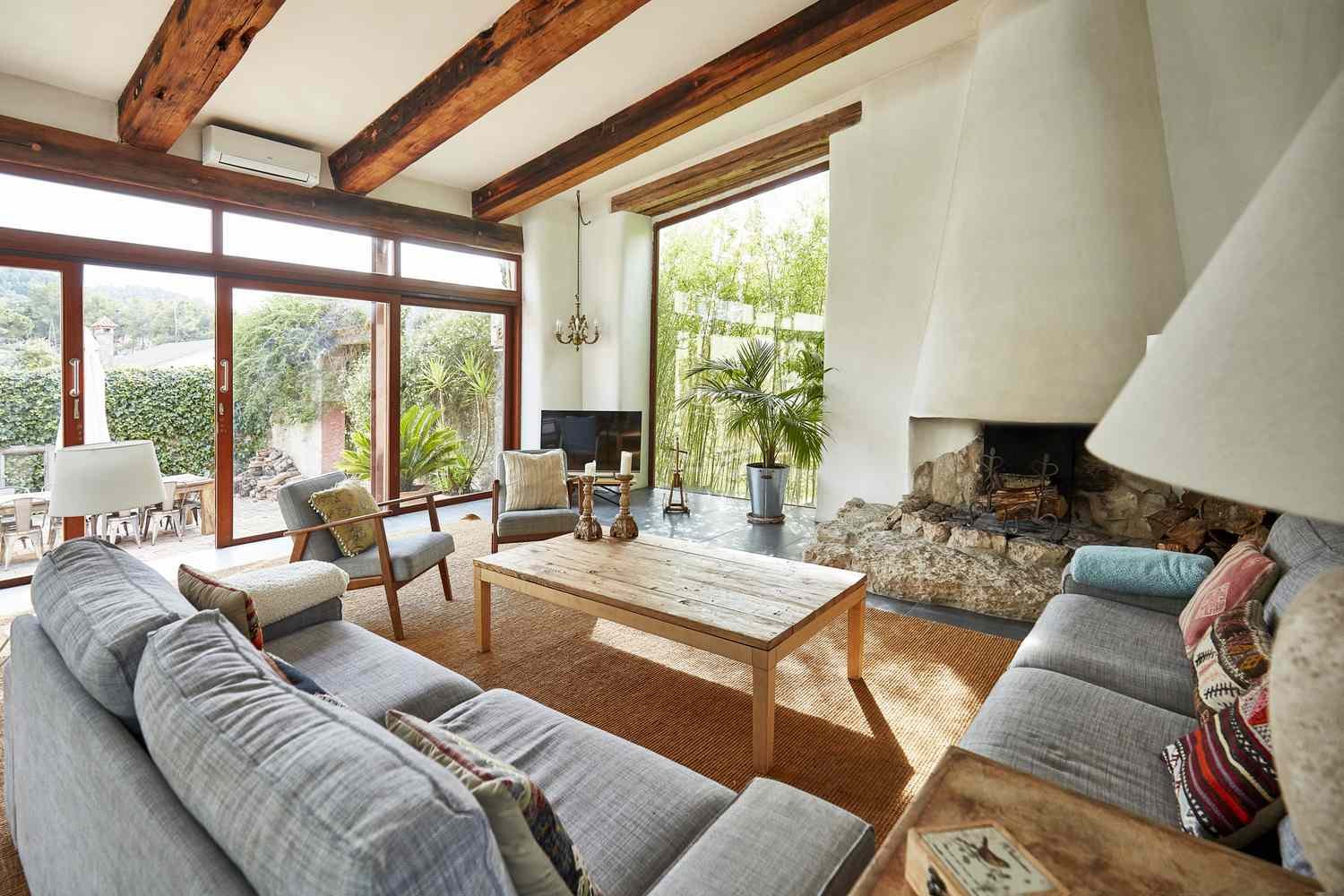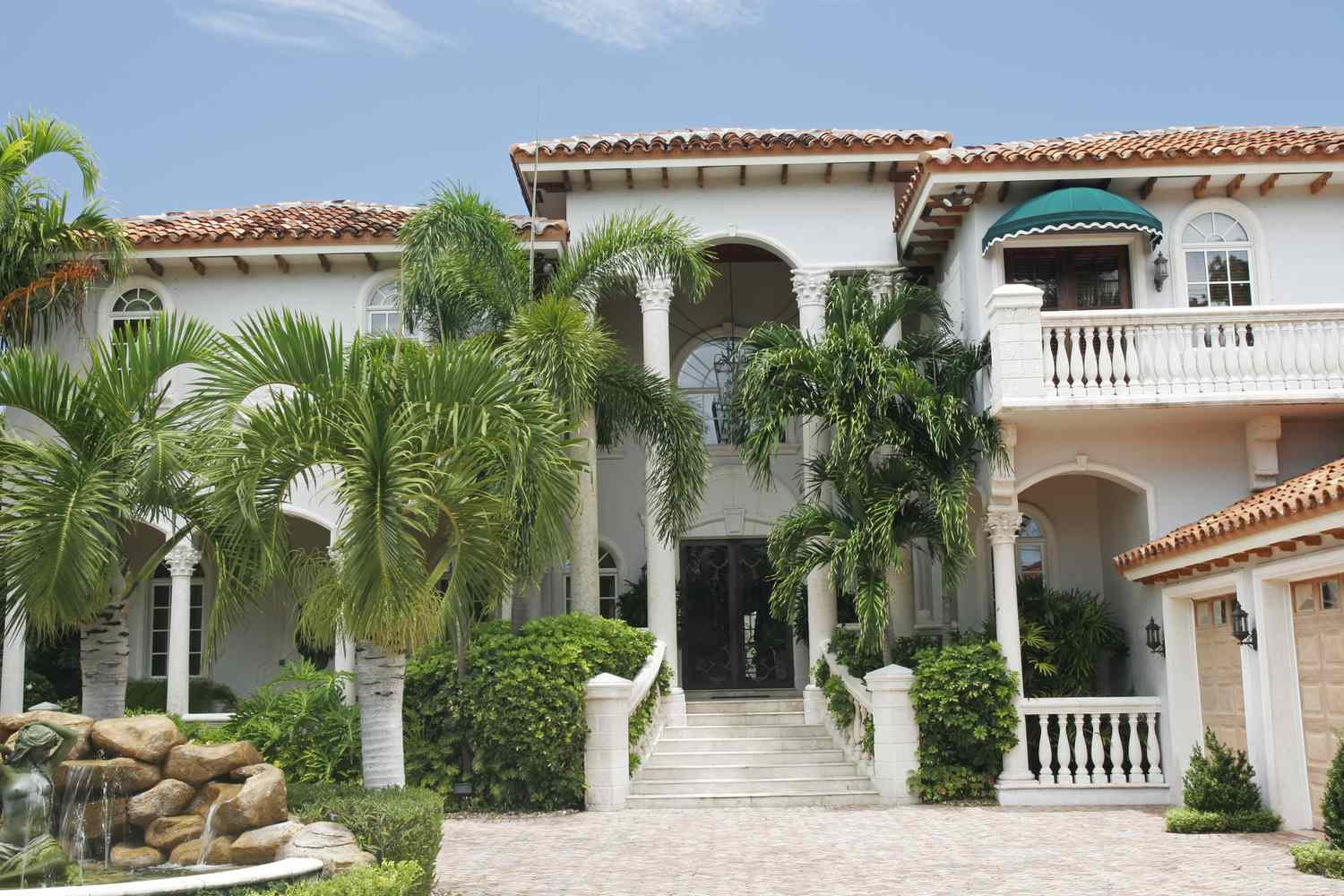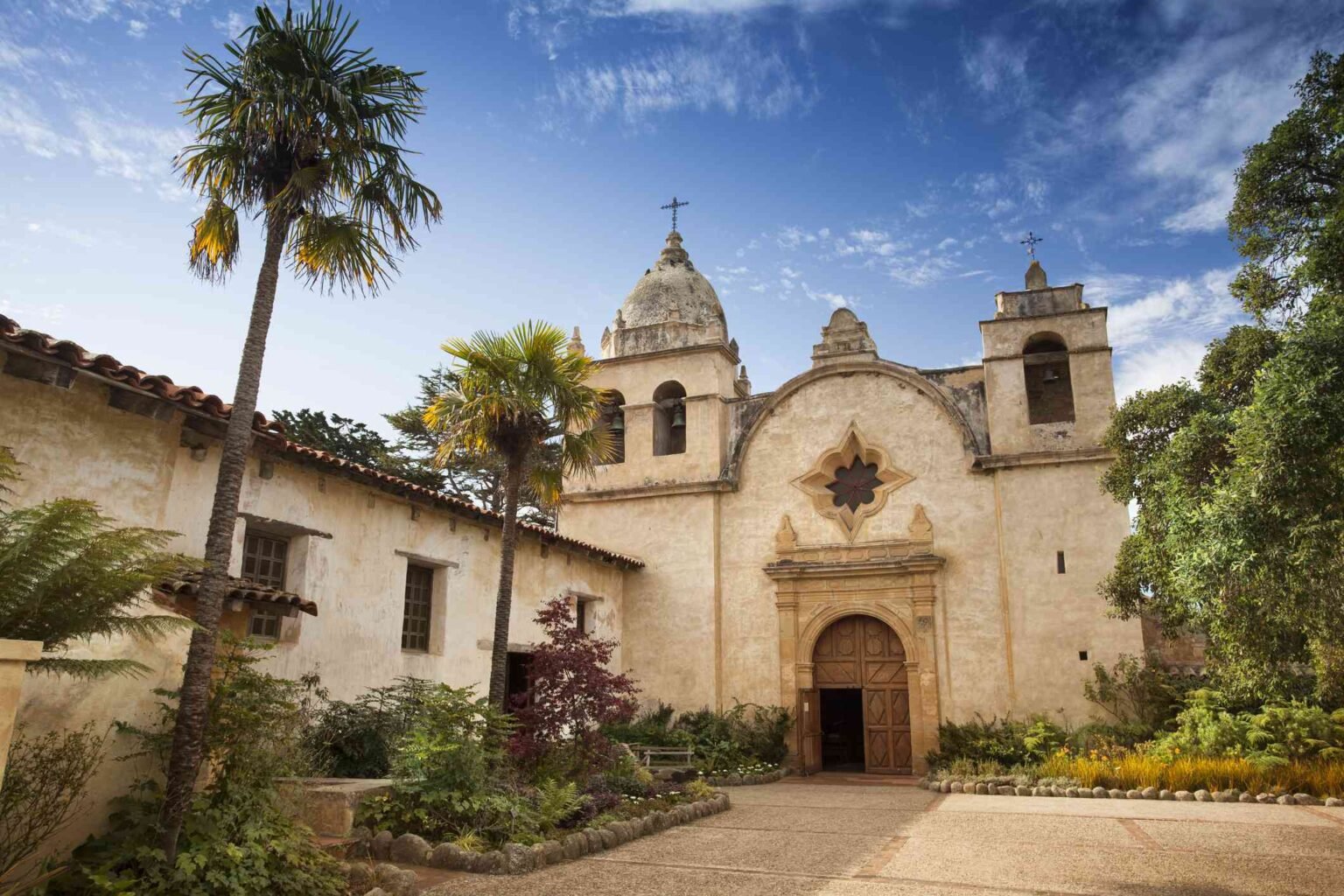Spanish architecture—today known best as Spanish mission architecture—has been popular for centuries. Before it was adopted by homeowners across Florida, California, Texas, and the Southwest, however, Spanish architecture was reserved for the beautiful, ornate churches and missions constructed in earlier centuries.
Although many Spanish missions shared similar features—like white stucco walls, red clay roof tiles, small windows, and exposed beams—the founding priests chose the stylistic and decorative touches of the buildings.
Spanish mission architecture has retained many classical building elements throughout the years. Blending influences from Spain, Mexico, and Indigenous cultures, this simple, rustic, yet beautiful architectural style is commonly found in warmer climates across the United States.
History of Spanish Architecture
Spanish architecture is a complex blend of numerous cultural influences that spans centuries from ancient Roman to today’s Spanish mission style. Here’s a brief historical rundown:
Pre-Romanesque Architecture (7th to 10th Century)
Christian-influenced Spanish buildings featured massive, thick stone walls and large towers embellished with Celtic-style medallions, arches, Visigothic Spanish columns, and imagery depicting warriors and animals.
Romanesque Spanish Architecture (10th and 12th Century)
The Roman conquest of Spain heavily inspired the architecture in Spain at this time. to erect monumental buildings and churches. The architecture focused on round towers, arched forms, and thick stone walls.
Cisterian Architecture (12th Century)
The Spanish architecture of this time was transitioning from Romanesque to Gothic, featuring simple designs alongside the more unusual and emerging Gothic features.
Gothic Spanish Architecture (12th to 14th Century)
Though there are many Spanish Gothic styles within this period, elements ranged from pointed arches, vaulted ceilings, lots of stained glass, and gargoyles.
Mudejar Style (12th to 16th Century)
Many cultures, from Syria to Persia, influenced Spanish architecture in this period. Elements included arches, columns, octagonal-shaped towers, intricate tile mosaics on exterior and interior walls, and extensive brickwork.
Renaissance Spanish Architecture (14th to 16th Century)
Spanish architecture migrated from the Gothic style back to the classical Roman Renaissance style. Building facades were still highly embellished though not as eccentric as the Gothic style.
Baroque Spanish Architecture (16th to 18th Century)
This period of Spanish architecture was heavily influenced by Italian and French Rococo styles, including excessively intricate facades embellished with stone, brick, and metal.
Neoclassical Style (18th to 20th Century)
Spanish architecture at this time focused on simplicity, functionality, and symmetry, and took its cue from more modern Italian buildings.
Spanish Colonial Architecture (1600s to Mid-1800s)
Spanish settlers began to arrive in the Americas between 1600 and the mid-1800s, bringing traditional building styles from Spain. The style also drew inspiration from Mexican and Indigenous cultures across the country, you’ll see marked differences in the stylings of Spanish-style homes in the Southeast and Southwest. However, some common features included adobe (made from straw and clay) for interior and exterior walls, red clay roof tiles, and wooden supporting or exposed beams.
Spanish Mission Style Architecture (Late 1800s to Present)
Spanish mission style is a part of the Colonial style. By the 1920s, there was a major boom in homes built using Spanish mission-style architecture, which is less ornamental than any other Spanish architectural style. It remains a popular building style today, particularly in warmer, drier climates in the United States.
Must-Have Elements of Spanish Architecture
As previously mentioned, Spanish missions often had distinguishing characteristics—based on the founding priest’s decorative preferences. There are, however, some common elements shared among the Spanish missions across the country:
White Stucco Walls
Not only was adobe an excellent—and abundant—building material for Spanish settlers but finishing it with white stucco offered some protection from hot, sunny days, too. Here’s how it works: During the day, thick stucco walls retain cool air, and prevent it from escaping to the outside; at night, when temperatures drop, it releases the warmth accumulated throughout the day back into the home.

Red Clay Roof Tiles
Another building element that arose from availability, red clay roof tiles are one of the most well-known characteristics of Spanish architecture. Shaped like half a tube, these clay tiles capture and retain cool air. Roofs were typically low and slightly pitched, with eaves that extended beyond the roof line to add protection from the elements.
Asymmetrical Facades With Towers
Unlike Spanish Colonial architecture, Spanish mission-style structures often had asymmetrical facades. Large, square pillars and bell towers typically flanked the structure.

Arched Corridors
The cloisters, or covered walkways in Spanish missions, usually featured decorative archways. Walls were generally adobe and finished with stucco, but the archways could be finished with various stones, hand-made tiles, or mosaic glass.
Quatrefoil Windows
Resembling a flower with four petals or a four-leaf clover, these windows were commonly built in Spanish missions. Adding a decorative element to an otherwise simple facade, many modern Spanish-style homes utilize quatrefoil today.
Where to Find Spanish Architecture
The largest collections of classic and modern Spanish mission structures are found where the Spanish colonists originally settled, in California, Florida, and the Southwest. Although many Spanish-style homes share common elements, you’ll see distinctive variations between regions, due to influences from Indigenous cultures and the building materials available.
Spanish-style homes were built with adobe, which is highly susceptible to serious damage under cold, damp conditions—so you’ll find most Spanish-style adobe homes were built in warmer, drier climates.
-
What is the most well-known style of Spanish architecture?
Spanish Colonial architecture is most well-known because it’s popular throughout the Southeastern and Southwestern sections of the United States, including Florida and California.
-
Are there any colors specific to Spanish architecture?
Spanish architecture is known for using earthy reds and browns, greens, and bright white stucco.
-
What are the different style periods within Spanish architecture?
There are many different style periods within Spanish architecture. Throughout the centuries, Spanish architecture has gone from highly ornate Roman-inspired buildings to eccentric Gothic and baroque structures to more rustic Spanish Colonial houses and missions commonly found today.



